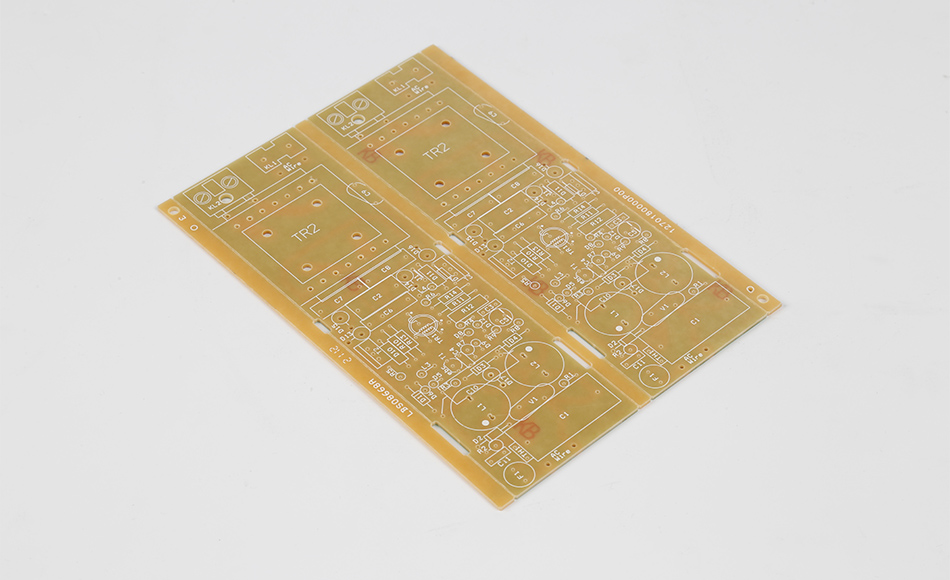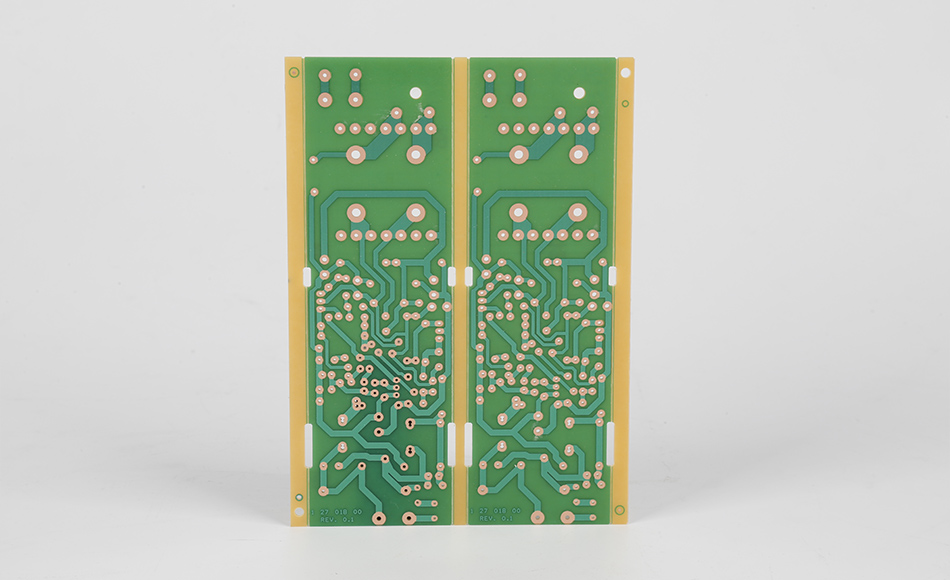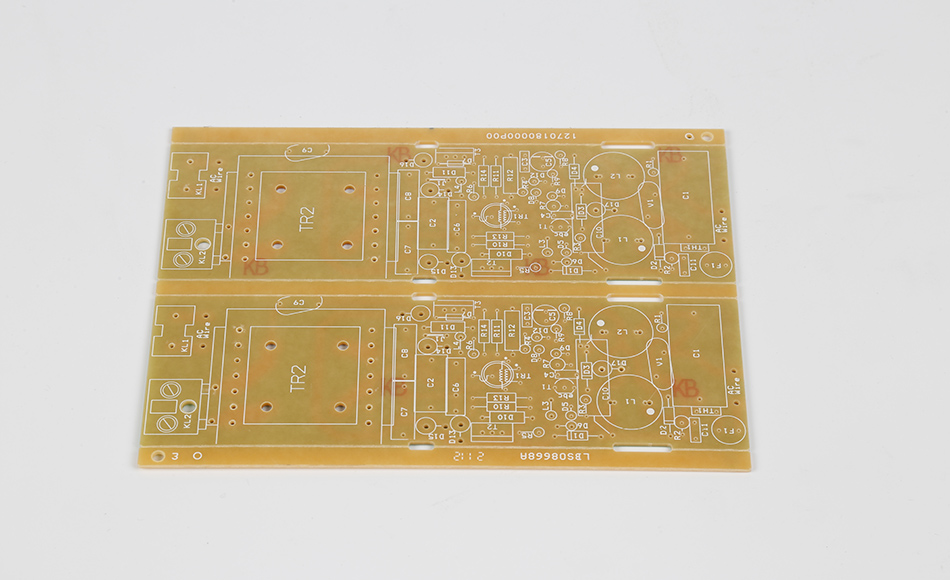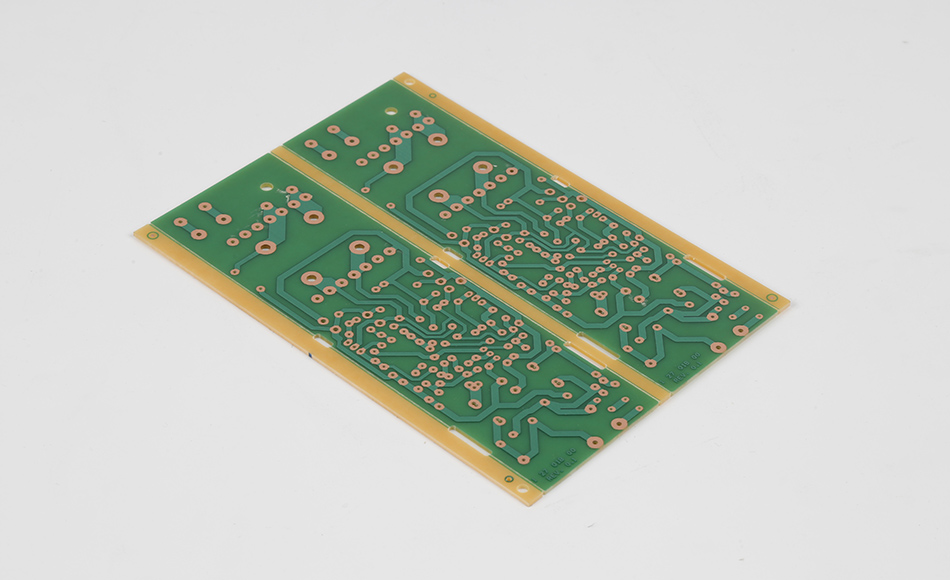-
- PCB TYPE
- PRINTED CIRCUIT BOARD PROTOTYPE ALUMINUM PRINTED CIRCUIT BOARD R&F PCB FPC HIGH FREQUENCY PCB HIGH-TG PCB HEAVY COPPER PCB HDI PCB PCB FOR LIGHTING METAL CORE PCB
time:Aug 19. 2025, 20:00:55
The 0.5mm Countersink CEM3 Circuit Board represents a pinnacle of miniaturization in PCB manufacturing, where even the smallest recesses play a critical role in enabling compact, high-performance devices. A 0.5mm countersink—measured by its diameter at the surface—demands extraordinary precision, as any deviation can render it incompatible with micro-components or fasteners. In CEM3 circuit boards, which balance affordability with reliable performance, this level of precision is both a technical challenge and a strategic advantage: it allows engineers to design smaller, lighter devices without sacrificing mechanical stability or electrical functionality. This article delves into the unique considerations of 0.5mm countersinks in CEM3 circuit boards, including manufacturing techniques, quality control measures, applications in compact electronics, and the benefits they bring to modern device design.
A 0.5mm countersink is far more than a scaled-down version of larger recesses; its size imposes specific requirements that make it indispensable in certain applications:
In devices where space is measured in fractions of a millimeter—such as wearable sensors, micro-robots, or medical implants—0.5mm countersinks allow tiny fasteners (e.g., M1.2 screws) or component leads to sit flush with the CEM3 circuit board surface. This eliminates protrusions that would otherwise increase the device’s profile, making it possible to fit complex functionality into impossibly small housings. For example, a 0.5mm countersink in a CEM3-based hearing aid PCB ensures that the battery connector lies flat, reducing the device’s overall thickness by up to 30%.
Modern electronics rely on micro-scale components, such as surface-mount connectors with 0.5mm pitch or micro-sensors that require precise alignment. A 0.5mm countersink acts as a micro-guide, ensuring these components seat perfectly during assembly. In CEM3 circuit boards used in IoT nodes, this alignment is critical for maintaining signal integrity in high-density circuits where even a 0.1mm misalignment can cause short circuits.
CEM3 circuit boards used in compact devices are often thin (0.8mm or less). A 0.5mm countersink, when properly executed, distributes the stress of micro-fasteners evenly across the substrate, preventing cracks in the epoxy matrix or glass fibers. This is particularly important in flexible CEM3 variants used in wearable devices, where repeated bending could exacerbate stress concentrations from improperly recessed components.

The small size of 0.5mm countersinks amplifies the inherent challenges of working with CEM3, requiring specialized solutions to avoid defects:
CEM3’s hybrid structure—non-woven glass core and woven outer layers—behaves unpredictably at 0.5mm scales. The non-woven core, which is more porous, can collapse or tear during countersinking, creating irregular recesses. Meanwhile, the woven glass layers, with their higher density, may resist cutting, leading to uneven edges or frayed fibers that protrude into the countersink. These inconsistencies can block micro-components from seating properly, compromising both mechanical and electrical performance.
Standard countersink tools are too large or insufficiently precise for 0.5mm recesses. Even carbide tools, which work well for larger countersinks, must be custom-ground to achieve the sharp, consistent edges needed for 0.5mm diameters. Dulling occurs rapidly due to CEM3’s abrasive glass fibers, and a single dulled edge can cause the tool to “skid” across the PCB surface, creating off-center or misshapen countersinks.
At 0.5mm scales, heat buildup during countersinking is intensified: the small tool-to-material contact area concentrates friction, raising temperatures enough to soften CEM3’s epoxy resin. This can cause the resin to flow into the countersink, creating burrs or narrowing the recess. Additionally, glass fiber debris—too fine to be easily evacuated by standard cooling systems—can clog the tool’s flutes, further increasing heat and disrupting the cutting process.
A 0.5mm countersink typically requires tolerances of ±0.02mm for diameter and depth to match micro-components. Achieving this across high-volume production runs is challenging due to material variations in CEM3 batches and tool wear. Even minor deviations can render the countersink useless, as micro-fasteners or leads will either not fit or sit unevenly.

Producing reliable 0.5mm countersinks in CEM3 requires a combination of specialized tooling, optimized processes, and advanced machinery:
Diamond-Tipped Micro-Countersinks: These tools feature ultra-sharp, diamond-coated edges that maintain precision even when cutting abrasive glass fibers. Their small diameter (as low as 0.3mm at the tip) allows for precise control over the 0.5mm surface diameter.
Single-Flute Geometry: Tools with a single flute reduce debris buildup, as there are fewer spaces for glass fibers to clog. The flute is designed with a steep helix angle to enhance chip evacuation, critical for preventing heat buildup.
Short Shank Lengths: Rigid, short shanks minimize tool deflection, ensuring the countersink remains concentric with the hole. This is essential for avoiding off-center recesses in 0.5mm dimensions.
Ultra-High-Speed Spindles: Spindles operating at 80,000–120,000 RPM enable clean, fast cutting with minimal heat buildup. The high speed allows the tool to shear glass fibers before they can fray, reducing debris and improving edge quality.
CNC Micro-Drilling Systems: These machines offer positional accuracy of ±1μm, ensuring the countersink is centered precisely on the target hole. They integrate real-time feedback systems to adjust tool position if deviations are detected.
Pulsed Cooling: Instead of continuous mist cooling, pulsed systems deliver micro-bursts of coolant (e.g., every 0.1 seconds) to flush debris from the cutting area without flooding the countersink. This prevents coolant from pooling in the small recess and interfering with tool movement.
To ensure accuracy, 0.5mm countersinks are created in a multi-step sequence:
Micro-Pilot Drilling: A 0.2mm pilot hole is drilled to guide the countersink tool, reducing the risk of slippage.
Pre-Countersinking: A smaller countersink tool (0.3mm diameter) creates a preliminary recess, establishing the correct angle and removing loose fibers.
Final Countersinking: The 0.5mm tool completes the recess, with the pre-countersink ensuring a clean, even cut.
Deburring: A rotating nylon brush (0.1mm diameter) gently removes any remaining fiber burrs from the countersink edge, ensuring a smooth surface for component seating.

Ensuring consistency in 0.5mm countersinks requires inspection methods capable of measuring micro-scale features:
Confocal Microscopy: This technique uses a laser to create 3D images of the countersink, measuring depth, diameter, and angle with ±0.5μm accuracy. It can detect even minor irregularities, such as fiber fraying or resin burrs, that would escape traditional inspection.
Automated Microscopy Systems: Integrated into production lines, these systems capture high-resolution images of each countersink, comparing them to a digital template. They flag deviations in real time, preventing defective boards from proceeding to assembly.
Micro-Coordinate Measuring Machines (CMMs): Equipped with probing tips as small as 0.1mm, these machines physically measure the countersink’s dimensions, ensuring they fall within the ±0.02mm tolerance range. This is particularly important for high-reliability applications like medical devices.
X-Ray Fluorescence (XRF): For countersinks in multi-layer CEM3 boards, XRF checks for delamination or resin displacement beneath the surface, which could weaken the structure despite a visually acceptable countersink.
Component Fit Validation: Sample boards are tested by inserting micro-fasteners or component leads into the 0.5mm countersinks. The force required to seat and remove the components is measured to ensure proper fit—too loose, and the component may vibrate loose; too tight, and the PCB could crack.
Thermal Cycling: Test boards undergo temperature cycles (-40°C to 85°C) to simulate operational stress. After cycling, countersinks are re-inspected for cracks or deformation, ensuring they maintain integrity under extreme conditions.

0.5mm countersinks in CEM3 circuit boards are indispensable in applications where miniaturization and precision are non-negotiable:
Fitness Trackers: These devices use CEM3 circuit boards with 0.5mm countersinks to mount heart-rate sensors and battery contacts, ensuring a slim profile that conforms to the wrist.
Smart Glasses: Micro-cameras and display connectors in smart glasses rely on 0.5mm countersinks for flush mounting, reducing weight and improving user comfort.
Portable Diagnostic Tools: Handheld blood glucose monitors use 0.5mm countersinks in CEM3 boards to secure microelectrodes, ensuring accurate readings by maintaining precise alignment with test strips.
Implantable Electronics: While CEM3 is not used in fully implantable devices, external components (e.g., charging coils for pacemakers) use 0.5mm countersinks to minimize size and improve patient comfort.
Miniature Pressure Sensors: Deployed in pipelines or machinery, these sensors use CEM3 circuit boards with 0.5mm countersinks to mount diaphragms, ensuring accurate pressure readings by maintaining a flat, unobstructed surface.
Robotics: Micro-motors in small robots (e.g., surgical bots) rely on 0.5mm countersinks to secure gears and sensors, reducing friction and improving movement precision.
Earbuds: The tiny circuit boards in wireless earbuds use 0.5mm countersinks to mount speakers and charging pins, ensuring the devices remain compact and lightweight.
Smart Watches: Display drivers and haptic feedback motors in smart watches are secured with 0.5mm countersinks, contributing to the slim, durable design consumers demand.

Designers and manufacturers must collaborate closely to ensure 0.5mm countersinks perform as intended:
Avoid Sharp Corners: Countersink edges should include a 0.05mm radius to reduce stress concentration, preventing cracks in the CEM3 substrate.
Align with Copper Traces: Maintain a 0.2mm clearance between the countersink and copper traces to avoid damaging conductive paths during cutting.
Specify Material Thickness: CEM3 boards should be at least 0.6mm thick to accommodate a 0.5mm countersink without risking breakthrough to the opposite side.
Early Tool Selection: Involve tooling specialists during the design phase to select or custom-design countersink tools optimized for 0.5mm dimensions in CEM3.
Batch Testing: Test countersinking parameters on sample CEM3 boards from each material batch, as fiber density and resin content can vary slightly and affect cutting performance.
Gentle Cleaning: Use ultrasonic cleaning with a mild detergent to remove debris from 0.5mm countersinks, avoiding high-pressure sprays that could damage the recess edges.
Protective Coating: Apply a thin layer of conformal coating to the countersink area to seal glass fibers, preventing moisture ingress and improving long-term reliability.
Advancements in manufacturing are pushing the boundaries of what’s possible with 0.5mm countersinks in CEM3 circuit boards:
Femtosecond lasers—capable of ultra-short pulses—are being tested for 0.5mm countersinking. These lasers vaporize material with minimal heat transfer, eliminating resin softening and fiber fraying. While currently expensive, laser systems could become viable for high-volume production as costs decrease.
Machine learning algorithms are being trained to predict how variations in CEM3 material properties affect countersink quality. By adjusting cutting parameters (speed, pressure) in real time, these systems ensure consistent results across batches, reducing waste and improving yield.
Tools coated with carbon nanotubes (CNTs) offer enhanced wear resistance, maintaining sharp edges longer during 0.5mm countersinking. CNT coatings also reduce friction, lowering heat buildup and improving debris evacuation.
The 0.5mm Countersink CEM3 Circuit Board exemplifies the precision required to meet the demands of modern miniaturized electronics. By addressing the unique challenges of creating micro-scale recesses in CEM3—from material heterogeneity to tooling limitations—manufacturers enable the production of compact, reliable devices that define today’s tech landscape. Whether in wearable sensors, medical tools, or consumer gadgets, these tiny countersinks play a huge role in ensuring components fit perfectly, stress is distributed evenly, and devices perform as intended. As technology continues to shrink, the importance of 0.5mm countersinks in CEM3 circuit boards will only grow, driving further innovations in manufacturing precision and solidifying CEM3’s position as a versatile, cost-effective substrate for the electronics of tomorrow.

Got project ready to assembly? Contact us: info@apollopcb.com



We're not around but we still want to hear from you! Leave us a note:

Leave Message to APOLLOPCB
